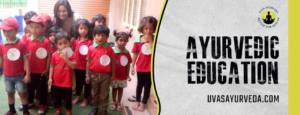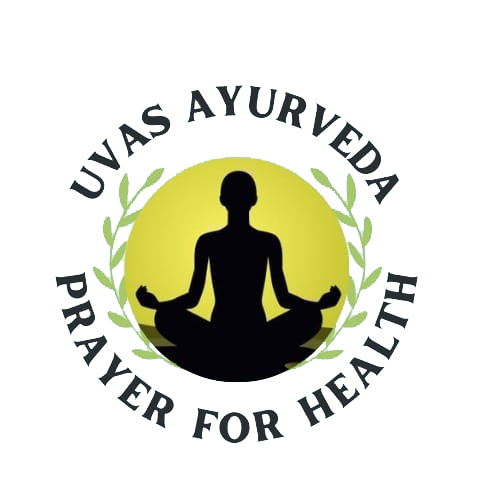In the field of Ayurvedic medicine, the integration of classroom learning and practical experience is crucial for the holistic development of students. Ayurveda, an ancient Indian system of natural healthcare, relies heavily on a deep understanding of the body, mind, and environment, which can only be truly grasped through a combination of theoretical knowledge and hands-on application. Practical training and hands-on experience are important aspects of Ayurveda which have grown to be crucial parts of the modern environment because they give students the knowledge and skills they need to begin their professions with confidence.
Ayurveda education in India traces its roots back to ancient times when knowledge was imparted through the Gurukula system. Students would live with their gurus (teachers) to gain comprehensive knowledge and practical experience in Ayurveda. The transmission of knowledge occurred through oral tradition and hands-on training, ensuring a strong teacher-student relationship.

There were three ways for obtaining the knowledge i.e. Adhyayanam (Study/learning), Adhyapanam (teaching) and Tadvidya Sambhasha (discussions) with the learned persons. Ayurveda suggest that in order to get expertise in any subject one should have the basic knowledge of the concepts. Study of a single science gives only limited understanding, therefore one should also get knowledge of other sciences. To explain different concepts in Ayurveda Acharya Charaka has given various methods of teaching and learning. The Roots of most of the current teaching methodology resides in ancient teaching and learning skills.
Importance of Practical Experience
Ayurveda is a complex and multifaceted discipline that encompasses a wide range of topics, from herbal remedies and dietary recommendations to lifestyle practices and spiritual philosophies. While the classroom provides a solid foundation in the theoretical aspects of Ayurveda, it is the practical experience that truly brings the principles to life.
Ayurvedic students need to be actively engaged in clinical settings, herb gardens, and community outreach programs to fully grasp the essence of this ancient tradition. By observing experienced practitioners, participating in patient consultations, and engaging in the preparation of Ayurvedic formulations, students develop a deeper understanding of the art and science of Ayurveda.
Sushruta in his Yogyaasutriyam adhyayam -9th chapter of Sushruta Samhita Sutrasthana, clearly explains the importance of surgical training for students. He explains the techniques of surgical training prior to Vishikhanu pravesham chapter in which he explains regarding entering of a medical student from academic field to professional practice field where the student deals with the patients directly. The main reason of this ordered presentation of chapters is that before entering in to medical profession the medical student has to master the art of surgical practice and techniques on nonliving objects and on living beings if there is no major intervention, in order to become a successful Surgeon.
Prime importance has been given for practical knowledge along with textual knowledge. Sushruta says one who lacks practical knowledge and cannot apply the theoretical knowledge into practice is just like a coward in the battle field who can neither fight the opponents nor die with courage.
Teaching and learning of Ayurveda in ancient times was based on Guru- Shishya Parampara (Teacher Disciple Tradition). The Disciple used to learn directly from the teacher about the particular subject under his close supervision as a family member. Both theoretical and practical or clinical knowledge was imparted to the scholar and once the Guru got satisfied with his knowledge and experience then only.
Bridging the Gap between Theory and Practice
To effectively bridge the gap between classroom learning and practical experience, Ayurvedic institutions have implemented various approaches that aim to provide students with a well-rounded education.
Clinical Internships
One of the most widely adopted methods is the integration of clinical internships into the curriculum. These internships allow students to work alongside experienced Ayurvedic practitioners, observing their diagnostic techniques, treatment modalities, and patient interactions. This hands-on experience not only reinforces the theoretical concepts but also develops the critical thinking and problem-solving skills necessary for successful Ayurvedic practice.
Herb Gardens
Another key aspect of Ayurvedic education is the establishment of herb gardens within the institutional settings. These spaces provide students with the opportunity to cultivate, harvest, and prepare Ayurvedic herbs and formulations, gaining a deeper understanding of the sourcing, processing, and application of these natural remedies.
Community Outreach Programs
Ayurvedic institutions also recognize the importance of community engagement, which is why many have implemented outreach programs that allow students to apply their knowledge in real-world settings. These programs may involve conducting health workshops, providing Ayurvedic consultations, or participating in events that promote the principles of Ayurveda within the local community.
Benefits of Practical Training
Practical training can be a useful supplement to traditional educational approaches as it gives students the chance to work on their chosen subject in the real world. Below here are a few points on the importance of practical training:
- Enhanced Problem-Solving Capabilities:
Practical training provides students a fantastic opportunity to hone their problem-solving skills while being exposed to real-world problems and developing creative solutions. The internship program in hospitals/medical sectors helps them build the skills necessary to handle any problem that can arise in a professional setting.
- Building Technical Skills:
Students get the technical skills necessary to excel in the relevant Ayurvedic fields through hands-on training. By working on projects and taking part in practical activities, they better understand the concepts and techniques they have learned in the classroom. With the training sessions, individuals can eventually become health practitioners and diagnose as well as control acute chronic conditions based on clinical evaluation.
- More confidence in oneself:
Practical lessons boost their confidence and use their knowledge in the real world. Their abilities are improved, and they are better able to identify their assets and weaknesses as a result.
- Enhanced interpersonal abilities:
The practical training assists students in developing their interpersonal skills through interactions with mentors and peers. They learn the skills necessary to interact with patients, and customers, and effectively communicate as a result.
- Better Employment Opportunities:
As the confident of the students increases, it helps to find employment in both the public and private sectors. It gives students the skills to get started right away and stand out when applying for jobs.

Challenges and Opportunities
While the integration of practical experience into Ayurvedic education has proven to be highly beneficial, it is not without its challenges. Securing adequate clinical placements, maintaining the quality and safety of herbal preparations, and ensuring consistent community engagement can be logistical hurdles that institutions must navigate.
However, these challenges also present opportunities for innovation and collaboration. Ayurvedic institutions can work closely with healthcare organizations, community centers, and regulatory bodies to streamline the practical experience components of their programs, ensuring that students receive the highest level of hands-on training and exposure.
Unfortunately, due to lack of scientific validation in various concepts, this precious gift from our ancestors is trailing. Hence, evidence-based research is highly needed for global recognition and acceptance of Ayurveda, which needs further advancements in the research methodology. The present review highlights various fields of research including literary, fundamental, drug, pharmaceutical, and clinical research in Ayurveda. The review further focuses to improve the research methodology for Ayurveda with main emphasis on the fundamental research. This attempt will certainly encourage young researchers to work on various areas of research for the development and promotion of Ayurveda.
Conclusion
The fusion of classroom learning and practical experience is essential for the holistic development of Ayurvedic students. By providing opportunities for clinical internships, herb garden cultivation, and community outreach, Ayurvedic institutions are equipping their students with the knowledge, skills, and real-world exposure necessary to become competent and compassionate Ayurvedic practitioners.
As Ayurveda continues to gain global recognition, the importance of this practical-centric approach to education will only become more pronounced. By embracing this synergistic model, Ayurvedic institutions can ensure that the next generation of practitioners are well-equipped to preserve and propagate the timeless wisdom of this ancient healing tradition.
Uvas Ayurveda is a global center of learning for Ayurveda enthusiasts, offering a diverse range of online, offline, and residential Ayurvedic courses and treatments. It serves as a dynamic fusion of a treatment center and a thriving hub for Ayurvedic education.
When we say the best school of ayurveda it does not mean about the infrastructure or the school buildings, but its about the quality of the courses and the knowledge that can be gained by the students. This also includes the convenience of the students. And this can be done by
- Ayurvedic Doctors
- Nutritionist
- Dietitians
- Yoga instructors
- Ayurvedic enthusiastic
- Therapeutic Yoga
- Also for beginners who wanted to know about ayurveda
Uvas Ayurveda offers online/offline/ residential courses on various subjects like:
- Woman Care (Stree)
- Pregnancy Care(Garbha Matha Sanskar)
- Nutrition, Diseases and Diet (Pathyapathya)
- Weight Management (Obesity)
- Ayurvedic Cosmetology (Soundarya)
- Ayurcharya for beginners ( Basics on Ayurveda)
The school’s commitment to excellence, its emphasis on preserving the traditional wisdom of Ayurveda, and its dedication to fostering skilled and compassionate practitioners make it one of the best schools of Ayurveda in the world.
Uvas Ayurveda is highly recognized as one of the best schools of Ayurveda due to its comprehensive education, dedicated faculty, emphasis on practical training, and commitment to preserving the traditional wisdom of Ayurveda.


Leave A Comment